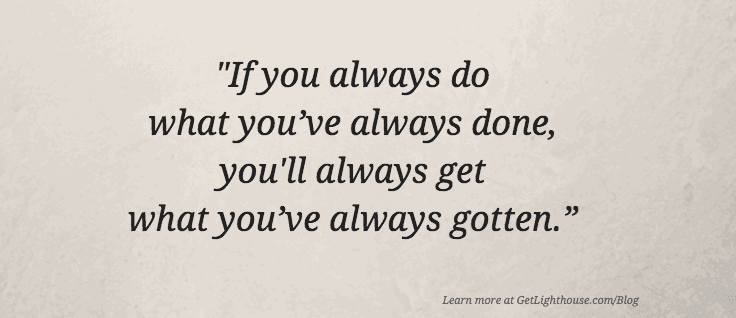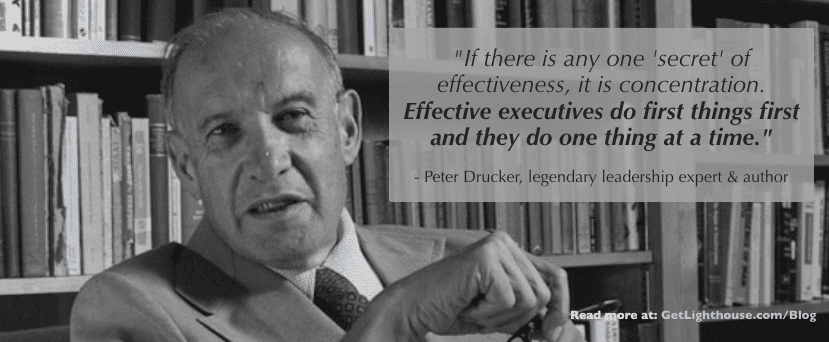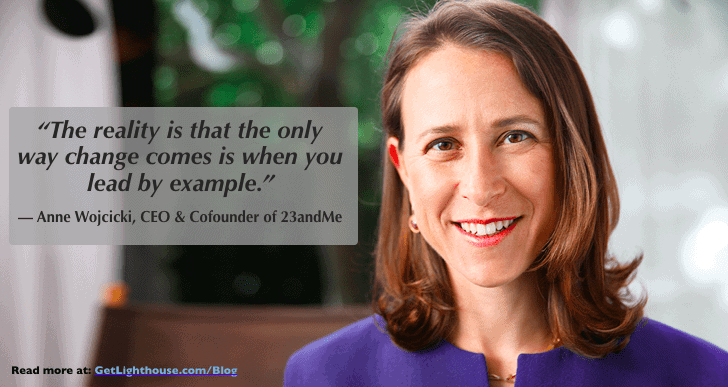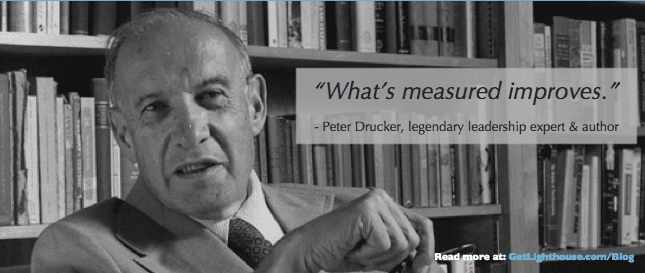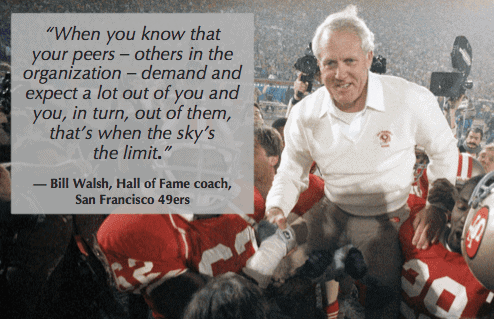Some lessons are learned in a classroom. Others, you learn from a book. And some of the hardest lessons come from the school of experience.
Zac Cramer is an entrepreneur like many of the readers of the Lighthouse blog. By chance, he and I had a conversation about how his business is doing and some recent changes.
It turned out to be such an interesting conversation with lessons I know will resonate with many of you, we've turned it into a post here today.
He's learned a series of valuable lessons that may be all too familiar to many of you. And what he did to change the structure and diversity of his team is relevant to any leader.
Thank you, Zac, for sharing your story.

From Surviving to Thriving: Lessons from a Founder in the Trenches
If you've ever started a company, you know how hard it is. Once the honeymoon of excitement wears off, the real work begins.
Often, you're put in a position to do things well outside your comfort zone. As much as you'd love to not do it, you do not have a choice; it may not get done if you don't.
At times, you also have to shoot from the hip; you need to make the best decision you can, even if it means making patchwork decisions to put out a fire.
From January 2010 to the end of 2016, Zac quickly grew his IT consulting company, IT Assurance, from $6,000 per month in revenue to $155,000 per month.
But After 6 years of hard work, the honeymoon was over for Zac. As he described it,
"In growing 25x in 6 years we had a lot of capital costs. So even though we were technically profitable, I usually only had 1-2 weeks of cash on hand at any given time.
I was constantly in survival mode, putting out spot fires. I always thought the answer was just more growth. That if we got "big enough” we'd eventually outrun our inefficiency…that…is not what happened.”
Unfortunately, all that "survival mode” fire-fighting finally caught up with him:
"My low water mark came in a bloody February 2016. Sales fell off a cliff, I had more employees than ever, and I had a negative EBITA of $20,360 on revenue of just $95,309.
That's when I finally saw that I wasn't going to get out of this one by selling my way out. The only way we were getting out of this hole was to become a company good at the thing I was selling people."
Turning the Corner
Backed into a corner, Zac knew he had to do things differently than he had been:
"I fired employees, I fired customers, customers fired us, we cut expenses, and because of it, 2018 was the most profitable year we've ever had.
Our revenues are now steady [at] about $115k/month and while profit is still a bit erratic, the range has narrowed significantly.... More importantly than the money, though, things are now more calm than I ever imagined they could be and I'm enjoying my job and my life more than I ever did previously.”
What allowed Zac to make such an incredible shift?
Key for him was understanding his weaknesses and being willing to put his ego aside to do what was necessary to change. As he put it:
"I am operationally weak. I have a short, intense attention span, exactly the right mentality to create a tremendous mess in operations.
I had to decide what mattered more, my ego or the survival of my company. Once I decided that I cared more about survival than I did about looking good, I was able to open myself up to reality.”
But with issues abound, he still knew the company was missing something. It was a chance hire, by the name of Javier, that gave him what he needed:
"An angel came into my life who had the skills I lacked, and the willingness to speak honestly with me. I had the good sense to listen, even when it hurt, and to follow even when I wanted to lead.”
Zac takes a leap of trust
Javier was hired (via a Craigslist ad, no less) as an automations programmer to help automate certain tasks. The goal was to reduce the company's labor costs, which were more than double the top companies in his industry.
But it turned out that Javier was even better suited for another role:
"He started questioning the assignment[s] that I was giving him in an interesting way.
It started off with me saying, 'Here's the thing we need to automate, do that.'
He would say, 'Why do we need to do that?'... He just kind of kept why-ing the conversation and it would get deeper and deeper…”
Javier helped Zac begin to realize that some of the tasks he was asking him to automate weren't even things they should be offering to their clients in the first place.
Javier's value quickly became much more than just in automation, but operations as a whole.
So, in October of 2017, ten months after joining the company and after "an extensive period of trust building and growth”, Javier took over operations for IT Assurance.
However, the journey of turning things around had just begun for Zac.
The lessons he has learned are applicable to many types of businesses, which is why we're sharing them today.
Here are four vital insights Zac Cramer learned about leadership, humility, and trust in turning his business around.
1) Stick to one thing at a time (let things burn)
One of the two main changes Zac says he made with the help of new COO Javier was to stick with an idea and see it to its end before jumping to another.
"The thing Javier is good at, which is not a skill I possess at all, is ‘sticking with an idea.' … He identified what caused us the most heartache was exceptions.'
So he said, ‘Okay, what we're going to do as an organization, is we're going to get consistent. We're going to eliminate exceptions and standardize how we do the things we do.”
Sounds easy, right? Well, Zac explains that it was more than just the idea of getting consistent with how they responded to clients. It was actually being persistent about implementing those changes.
"I was constantly trying new diagnostic tools, new strategies, reading books on culture and sales and attempting to apply them, wondering which one was the thing we needed.
I would pick up a concept... drop it six weeks later, pick up another concept, and we never got traction on anything. We were just moving from strategy to strategy.”
As COO, Javier helped the company focus and continues to do so. "He has been chomping away at exceptions and improving consistency for over a year.”
Getting comfortable letting go.
However, as a founder, it hasn't been easy for Zac to give up control over parts of the business in the name of this newfound focus.
Javier's policy of "letting things burn”– putting aside a smaller issue in favor of remaining focused on a larger and more important one– has been particularly difficult to deal with:
"I know it's good because we can't put out all the fires at the same time, but it's so difficult as a business owner…
The customer is in pain and I just have to accept that is the pain that is just going to exist right now. And that is not the pain that we are going to fix right now because we are fixing another pain that is even bigger and even more important.”
As you'll see as the story continues, this proved to be a pivotal approach for IT Assurance to succeed and grow.
2) Teach through action (and avoiding the pitfalls of a founder's mindset)
"[Javier] says it to me all the time…'What are you teaching them right now?'” says Zac.
As a leader, it's easy to fall for the misconception that people follow by our words only, when it's our actions that they look to and emulate just as much, if not more:
"Everything we, as leaders, say and do, teaches our employees how to behave.
That when something goes wrong, and we jump in to save them, we teach them that someone will always be there to "fix” their problems.”
Being a helicopter boss is a bad idea.
Shortly after putting Javier in charge of operations, an incident occurred where an employee did something Zac didn't approve of.
As he usually did, he went straight to the employee and told them how to correct the behavior. "In my mind, I solved the problem; there is a problem and I fixed it,” says Zac.
The following conversation ensued:
Javier said, 'You understand what you just did?'
I said, 'Yeah. He was doing something I did not like. You were here. I fixed the problem.'
He said to me, 'No, you just taught them that they don't need to listen to me. That if you say you want something that that's the way that needs to be done. And you just undid the lesson I was trying to teach them about the things that you think you corrected.”
Javier was training the company's employees. However, by stepping in, Zac was making it look like he didn't trust Javier and compromised the lesson he was trying to teach.
Creating fires
When customers would send Zac an email about an issue, he had developed a habit of firing off the email to a service person with an angry message without first researching the problem:
"[Javier] showed me that every time I did that, I do a couple of things:
One, by not taking time to gather evidence first, I was creating a lot of panic on issues that perhaps were actually addressed or weren't really what the customer was saying or whether there was more information available.
Two, I was changing everybody's priority down the vine. People can only do one thing at a time. So I'm emailing them and saying, 'Holy shit, what's going on?' Now whatever they were doing doesn't get done anymore.”
Javier showed Zac that by doing that, he was always creating new fires. By prioritizing the issue today, what needed to get done today now gets pushed to tomorrow, creating a never-ending cycle of fires.
Start with evidence
To stop the continuous cycle of new fires, Zac changed his process for when new issues arise:
"Now, I always start by gathering evidence. So if I get an email from a customer, the first thing is: Go look at the data, go look at the schedule, gather my own evidence about what is actually occurring...
And then, if I have an evidence-based complaint, if it does look like a real thing, then I'll forward it to Javier and I'll say, 'Hey, here's a thing that you need to know about or I think you want to know about.'”
By changing how he responded to customer complaints, it freed his team up to handle what was most important and not continue to create new fires that had to be put out.
As a business owner, when in that early survival phase, you're conditioned to handle issues as they arise. However, as you grow, this can hurt the flow of your team.
"Every time I interfere with that is the real cost to the organization,” says Zac.
It's hard to step away, but by doing so, Zac was able to improve his team's processes and free himself up as well.
3) Measure value, not time
Many of us are conditioned to believe that by putting a lot of time into something, we're doing a lot of work. But that's not always the case.
"One of [Javier's] first steps as COO was to eliminate overtime...We had tons of overtime, and I was sure cutting overtime would be a disaster for our customers. That we'd fall way behind, etc.”
However, what Zac found was the opposite:
"[Javier] said to me, ‘people will do the work we give them in the time they have available' and he was entirely correct.
Eliminating overtime saved us about 10% on payroll and we saw no impact on our customers and how much work the team actually got done each day.”
Zac says he used to confuse being busy with creating value. He now sees those things are unrelated.
"As soon as Javier said, 'There's no more overtime, you still have to get the same amount of work done.' They just did.”
The result of the elimination of overtime, and the other changes caused a cascade of turnover in the company. In a year and a half, the company turned over roughly three-quarters of their employees.
Restructuring with value as the central principle
Javier didn't replace team members one-to-one as some left or were let go. Instead, he completely reconfigured the way the company operated, with many employees absorbing new duties.
The result was that the company slashed its labor costs while maintaining the same level of productivity:
"The biggest change in how he leads versus how I lead is that he demanded value, and I was demanding time and loyalty...
If somebody says to me, 'I'm working really hard,' I would just accept that they're working really hard. What he does is he demands that they prove that they're working really hard.”
Zac says that because employees were now held accountable for the work they produced, many quit because of the pressure. The restructuring weeded out employees who weren't providing the value that their salary demanded.
"We had a lot of people quit because they couldn't handle that demand.'
These are people that I cared about and who had worked for me for many years.
It was very difficult to say to them: 'Look this is how we're doing it now. You need to be able to provide value and prove you're providing value or there is not a place for you here. It is not about whether or not you care or [are] loyal or want to work here."
Of all the things we discussed, this was the hardest for Zac, as it's clear he cared a lot about his staff. However, he knew that it was part of the difficult medicine he needed to take so his business could thrive.
4) Overhauling his staff, and improving diversity
Zac and Javier didn't only work to improve the financial health of the company.
Zac's passionate about diversity and understands the importance of building a culture where women and minorities feel both welcomed and valued.
White men, who dominate the IT industry, have been known to discriminate against women and minorities, driving them out of the industry.
And if they do join, some who run companies in the industry have made their lives miserable and drove them out.
But Zac is set on changing that:
"We're up to 60% minority and female representation on our team...
We don't just hire women and minorities who apply. We researched how to best outreach to them, how to make them feel comfortable, and how to create an environment they will enjoy working within.”
Doing the real work to bring change.
Zac had some great insights on what he and his team did to make women and minorities to feel welcome.
These are actions any team that wants to do the real work to bring diversity can do. They speak much louder than any hollow words you'd put on a careers page.
Here's 2 key changes he made:
1. He changed their qualification language
The one major external change that Zac and his team made was to change the way they framed their job posting descriptions.
Research by women's leadership expert and author Tara Morh found that women won't apply for jobs that they don't think they're qualified for. Not because of a lack of confidence, but because of a lack of clarity about the hiring process (thinking the qualifications were required).
To overcome that hurdle, they not only changed their entry-level job description from tier 1 to intern but removed the numerical measures of necessary experience. For example:
"Instead of saying three years of system administrator experience, we would say, strong problem-solving skills.”
The results of this change in their job descriptions speak for themselves:
"We didn't change what the job was. It was the same job that pays the same amount. We just changed how we described it.
By changing that description, we found the number of female candidates who applied went up. We went from 1 out of 100, 1 out of 200 to maybe 15 to 20%.”
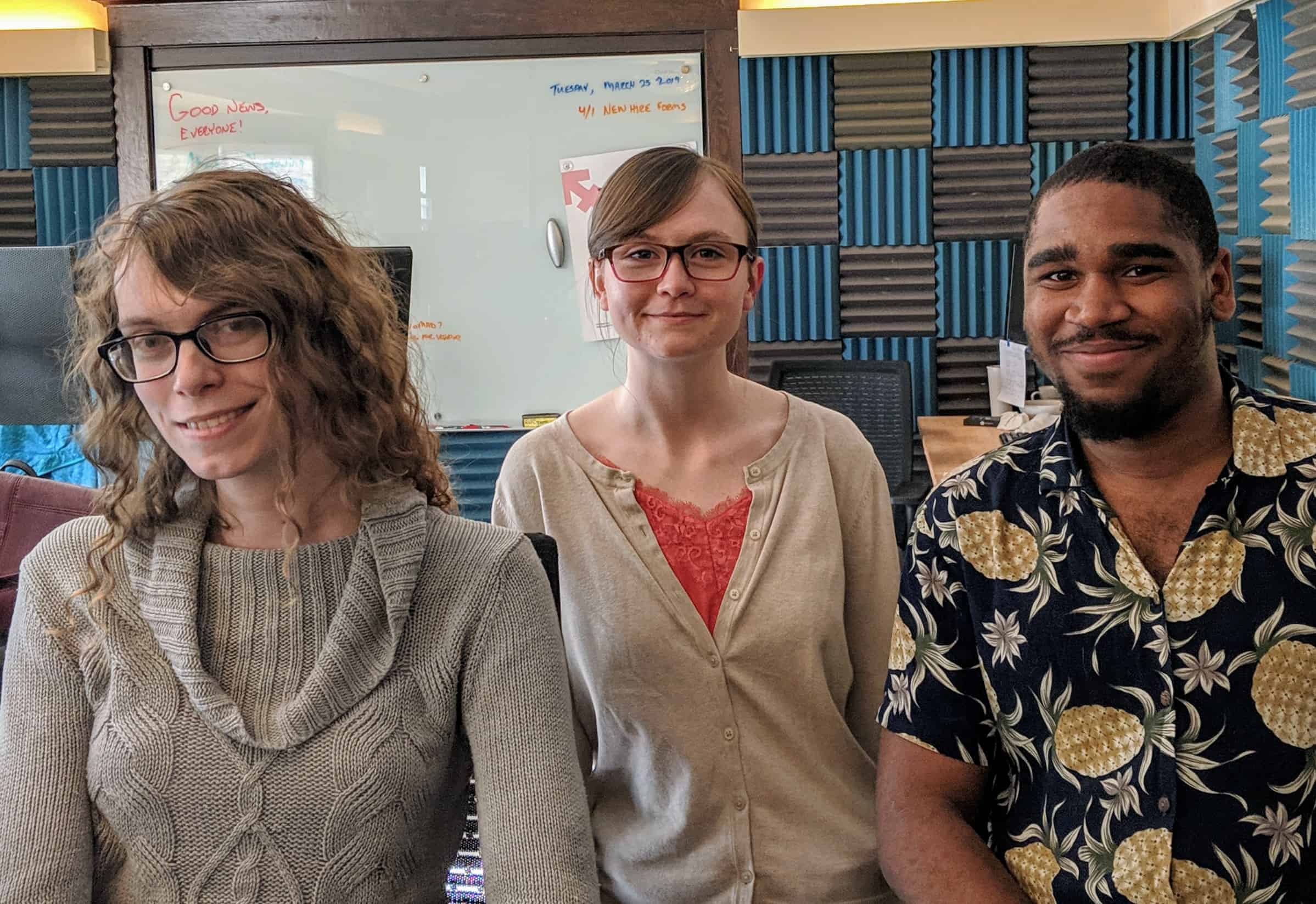
2. He offered support and encouraged respect and equality
Within the company, Zac made sexism and the mistreatment of minorities a conversation in the office instead of ignoring it:
"When we hire women, I have a conversation with them about this issue… I make sure that they know that I know how much discrimination is out there, that I know how women are treated in this world, in this business, and I'm an ally for them.
For many of them, it is the first time they have ever heard any white man acknowledge their lived reality. I think that really helps.”
Zac comes down hard on anyone who makes a sexist joke, making sure that they never do it again.
"We teach them with our action, how they see me and other leaders react when people say and do things.”
Another way Zac encourages a culture of respect and equality is by being mindful of how women are treated in meetings and when communicating feedback:
"If a woman is speaking, if someone else interrupts, I will stop that person, and invite the woman to continue speaking...
When possible to avoid gender bias, I will try to gather feedback anonymously as well.”

The Journey Continues
Zac has learned a lot in the past 18 months, and he was gracious enough to lay out what he's learned through this small part of his journey for the readers of the Lighthouse blog to learn.
Looking back, the result of all his hard work with new COO Javier has had a tremendous impact on his business and life in general:
"The dividends have been enormous, constant, and growing.
The future looks like a slow and steady continued climb. I'm over 25x in 6 years, I'd love 5-10% a year for the foreseeable future. Nice, sustainable, and consistent.”
By removing his ego from the equation he was able to let go of some of the things he was latching onto, accepting help and giving him more time to focus on what he's best at.
The changes Zac made were diverse and didn't only focus on their product offering or client list. He fundamentally changed how the business is run:
"One of the first things Javier demanded of me was our business model, which I didn't know and didn't have.
After months of work, I realized that our prior business model was, ‘Do whatever it takes not to get fired today.' A disheartening realization. I changed it to, ‘Customers hire us because we have the time to focus, plan, and execute.'”
Zac was on the edge of major struggles with his business, but with the approaches we shared today, they're in a much better place.
No matter if your company is thriving or in a tough spot, too, some of these lessons can help you turn the corner or become even greater, too.
[Ed note: If you want to talk to Zac about improving diversity in the IT world or anything else from this post, he's happy to chat and share his experiences. You can reach him at zac [at] itassurance [dot] com]


